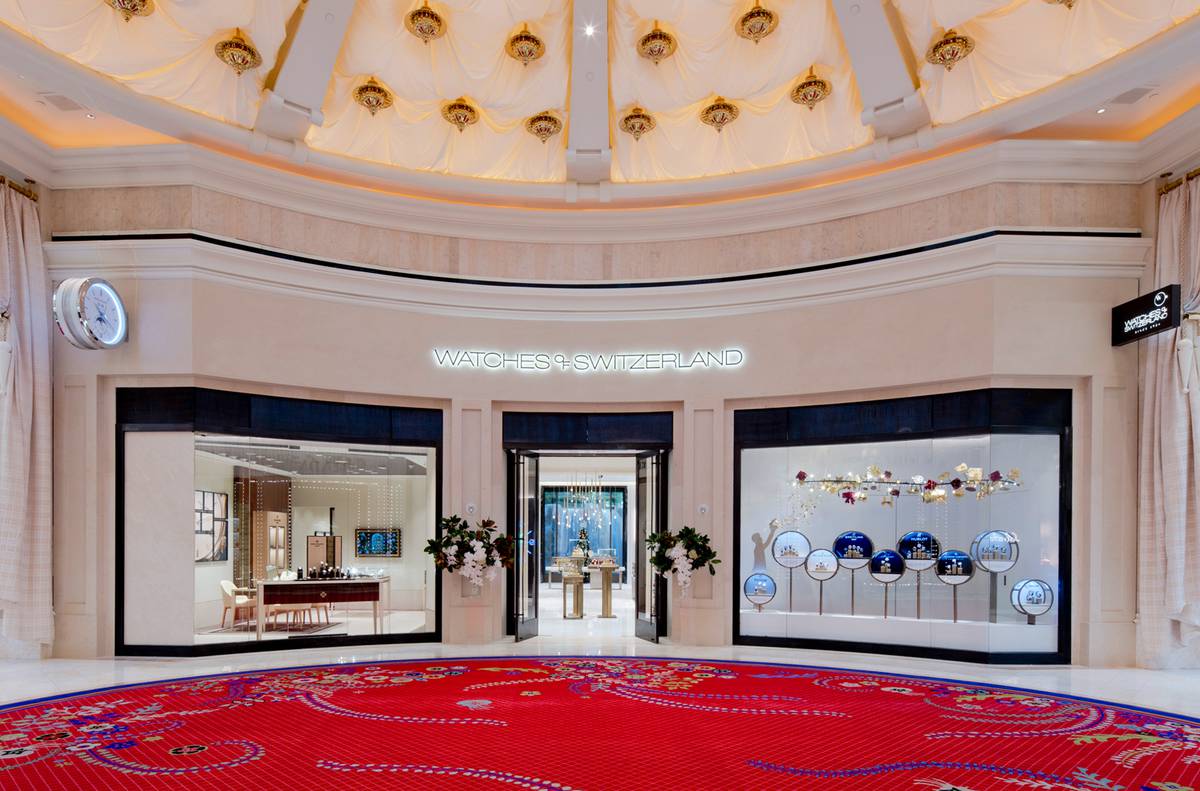Volume
58—
May 28, 2019 / Greg
Decorative Plaster at WoS Esplanade
Using plaster to create “stone”.
For Watches of Switzerland’s Las Vegas location at the Wynn Hotel, MNA proposed a sweeping elliptical stone-clad storefront to give the brand a strong presence within the Wynn’s Esplanade shopping wing.
The completed façade balances two primary finishes – a light and subtly-fossilized Saint Croix limestone and WoS’ signature oil-rubbed bronze. Prominent, inset, limestone pilasters create breaks in the storefront, framing bronze entry doors and display windows, and divide up the rich, continuous accent band of bronze meshwork along the header. Above, the expansive upper fascia is finished a venetian plaster, matching the Saint Croix.
We wanted to build on the richness of the metal mesh further and as a subtle nod to it, we proposed a “woven” basket-weave pattern, to be etched into the inset face of each pilaster. Authentic custom stone relief etching can be costly and impractical in an expedited project schedule, so we were challenged to find another method to achieve a similar look and feel.
We reached out to artisanal finisher, L’Artigiano, already on board to complete the plasterwork, to pick their brain on alternative specialty finishes. Based on our design intent, they partnered with decorative finish specialist Armourcoat Surface Finishes Inc. and proposed a multi-layered, textural plaster finish with an “etch-like” feel
The finish utilizes (2) different plaster products, applied to loose, MDF panels off-site and then installed later on. The base layer is a coarse grain Marmorino plaster product. This lime-based plaster is applied in (2) coats with the second coat intentionally manipulated through pitting. Pitting is a method of uniformly puncturing a surface with small holes and indentations to make it coarse. When the base layer if fully dried, a vinyl stencil mask of our basket-weave pattern is applied to the entire surface, similar to wallpaper. The mask shields the “negative” space of the pattern – in this case, the coarse plaster. A fine, Stucco Veneziano (Spatulata) plaster is then applied in (2-3) coats over the “positive” gaps of the mask. This plaster is left smooth. After a short period, the mask is then peeled away, revealing the pitted plaster beneath. The application combines a mix of gritty/matte and smooth/glossy surfaces, with a similar feel to stone etching that we feel adds a design enhancing richness to our facade.



